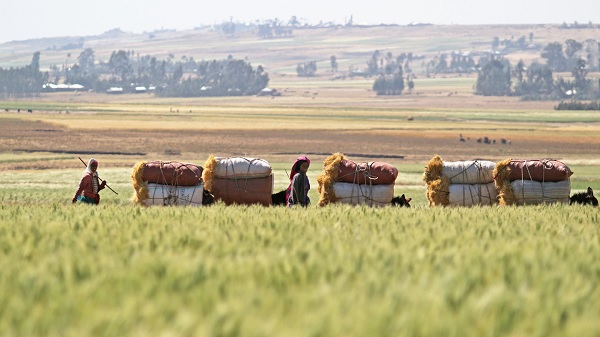
Grain production has increased during 2017-18 marketing year due to favorable weather conditions, particularly timely and adequate rainfall in the western and central highlands of the country where most of the grain is grown
By Eric Schroeder (World Grain)
WASHINGTON, D.C.– Better-than-expected weather coupled with only minor losses from Fall Army Worm buoyed grain production in Ethiopia during the 2017-18 marketing year, according to a March 9 Global Agricultural Information Network (GAIN) report from the Foreign Agricultural Service of the U.S. Department of Agriculture.
“Production of all major grains increased in MY17-18 due to favorable weather conditions, particularly timely and adequate rainfall in the western and central highlands of the country where most of the grain is grown,” the USDA said in the report. “In contrast, rains in the lowlands, especially in the eastern half and southeastern parts of the country were insufficient, resulting in lower-than-expected production in these areas. Meantime, (Fall Army Worm) related crop losses were relatively minor throughout the country.”
Wheat production in Ethiopia is estimated at 4.2 million tonnes in 2017-18, up from 3.9 million tonnes in 2016-17. The USDA said wheat output in Ethiopia has increased steadily in recent years and is up more than 50% since the 2008-09 marketing year. Most of the growth is attributed to better yields resulting from expanded access to improved seed, mechanization, minimal pest and disease pressure, as well as the opening of commercial farms, the USDA noted in the report.
Looking ahead to 2018-19, the USDA has forecast wheat production to hold steady at 4.2 million tonnes, with yield and harvest also forecast unchanged at 2.6 tonnes per hectare and 1.6 million hectares, respectively.
Consumption of wheat in Ethiopia is estimated at 5.95 million tonnes in 2017-18, up from 5.697 million tonnes in 2016-17. The forecast for 2018-19 calls for a slight uptick in consumption, to 6.050 million tonnes, the USDA said.
Citing a survey conducted by the Central Statistical Agency (CSA), the USDA said 60% of wheat production in Ethiopia is consumed by the producing farm household, 20% is sold to the market, and the balance is used for seed, in-kind wages, animal feed, and other minor uses.
Wheat imports in 2017-18 are estimated at 1.8 million tonnes, up from 1.5 million tonnes in 2016-17. The USDA said imports are forecast to fall back to 1.7 million tonnes in 2018-19 due in part to the government pulling back on imports because it recently replenished government-held reserves.
Read the complete story at World Grain
